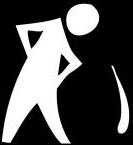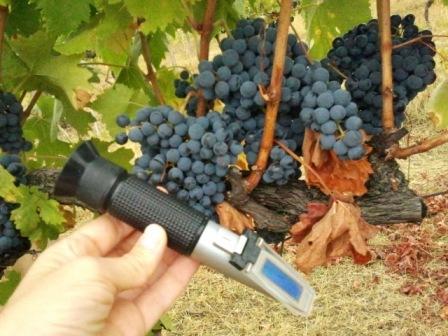Now’s the time! The grape harvest (the most anxious time of the year) is actually underway!
his year the Sangiovese from the young vines (just 300 plants), was in a hurry and ripened before the Vermentino (which usually easily beats all the others as regards ripening times): the grapes were harvested at the beginning of September and now both are safely in the cellar.
A close monitoring of the grapes has been underway for roughly a month to make sure they are all gathered in at just the right time.slotmachineitaliane.net
Obviously it is important to carry out analyses in the laboratory to see the amount of sugars, acidity and pH, but in the vineyard itself there are two basic tools that must be used: the refractometer and my mouth. The first enables us to make an approximate assessment of the sugar concentration while the second is essential to grasp the level of phenolic ripening of the grapes.
What happens is that while I’m strolling among the vines I pick off some grapes from the rows on my right and some from the rows on my left (this may seem rather silly, but this means I get grapes that have had a different exposure to the sun). I squeeze some of the grapes onto the refractometer to get the juice out. This allows me to see how much sugar they contain.
I put other grapes into my mouth, and the fun starts. Do you think I eat them? Well actually no – I taste them.
Grape tasting, when done seriously, is both technical and complex and requires you to fill out a number of cards with never-ending parameters to be evaluated. In the early stages of harvesting I carry out this tasting “in the field” in a rather approximate way, but this is very useful to see just what stage the grapes are at and to decide whether the time is right to harvest them, or whether it’s better to wait a while.
 Apart from the sweetness and acidity of the pulp, the main thing is to evaluate the consistency and possible astringency of the skin, which you chew a specific number of times, until it is reduced to a pulp. Once you’ve finished the tasting you can elegantly spit the skin out and go on to the seeds.
Apart from the sweetness and acidity of the pulp, the main thing is to evaluate the consistency and possible astringency of the skin, which you chew a specific number of times, until it is reduced to a pulp. Once you’ve finished the tasting you can elegantly spit the skin out and go on to the seeds.
The seeds have to be separated from the rest beforehand and observed. The colour gives important clues regarding the degree of lignification and hence the pleasantness of tannins that can been extracted. At this point you then chew the seeds and you get a wealth of information just from the way they break between your teeth. Once they’ve been finely crushed you can spit these out too.I believe that this elegant practice, which requires that those accompanying you are not too squeamish and quick on their feet to avoid getting chewed skin or seeds on their shoes, is the most important way to determine the best time for harvesting.
So here we are again! The grape harvest (the most anxious time of the year) is actually underway!!!
Francesca

